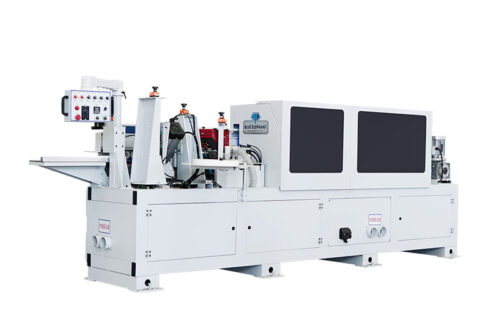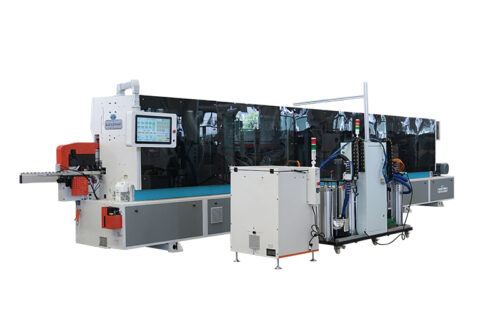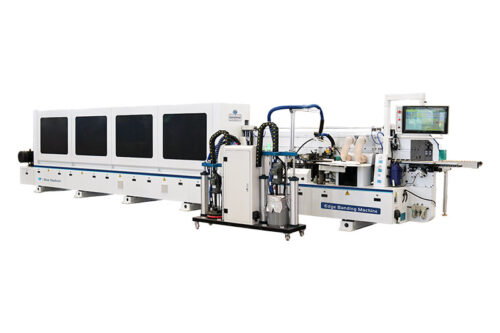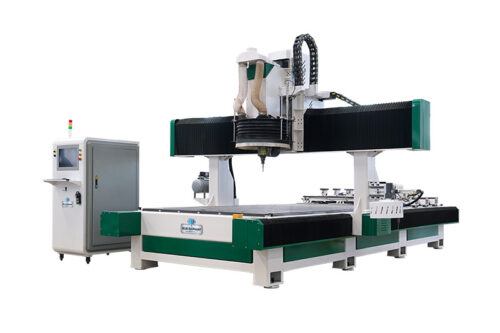I once had a CNC machine sitting in my shop for three weeks completely useless. Not because it was broken, but because I couldn’t figure out how to get the CNC controller to do what I wanted. I knew how to design parts. I understood cutting speeds and feed rates. But I didn’t understand how the control system actually worked.
That was a wake-up call. The CNC control system isn’t just a tool, it’s the foundation of everything.
It tells the machine where to move, how fast, and how deep to cut. Without it, even the best machine is just a pile of metal. If you’re trying to wrap your head around CNC control, you’re in the right place.
This guide will explain what a CNC control system is, how it operates, and why it’s essential for precision machining. By the end, you’ll know exactly what it does and how to make it work for you.
Let’s start!
1. What Is CNC Control?
If you’ve ever watched a CNC machine carve, cut, or shape material with perfect precision, you might have wondered: How does it know exactly where to move? The answer is CNC control.
CNC, or Computer Numerical Control, is what gives these machines their intelligence. It’s the system that translates digital designs into precise movements. Without it, a CNC machine is just a motorized tool with no direction.
At its core, a CNC control system takes commands from software and tells the machine how to move. It controls:
- Positioning: Where the tool should move on the X, Y, and Z axes.
- Speed: How fast the tool should cut, drill, or carve.
- Sequence: The exact order of operations for each task.
- Adjustments: Corrections to maintain accuracy based on sensors and feedback.
Think of it like a GPS for machining. You enter the destination (your design), and the CNC control system calculates the best route to get there. It makes sure the machine follows the exact path, down to the smallest fraction of a millimeter.
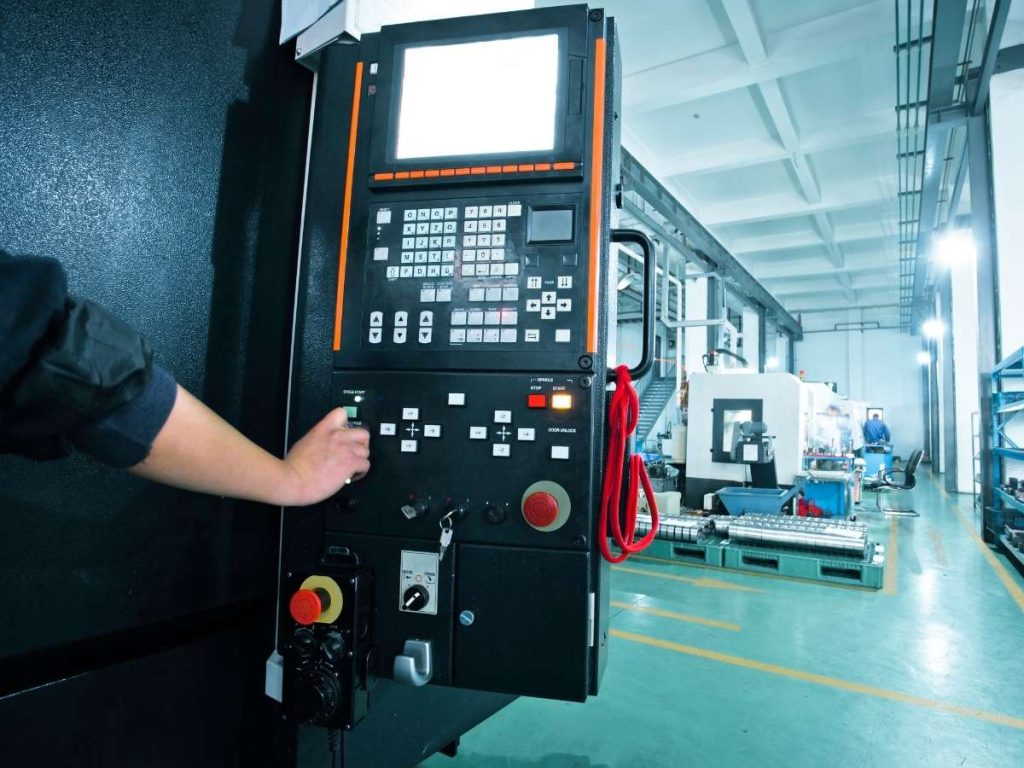
2. How CNC Control Works
To understand that, you need to know how CNC control systems process commands, execute movements, and maintain precision. Let’s break it down step by step.
It all begins with a digital design. Before the machine can cut, drill, or carve anything, a part must be designed on a computer. This is done using CAD (Computer-Aided Design) software. The design acts as the blueprint for the CNC machine.
Once the design is complete, it needs to be converted into G-code. G-code is a programming language that tells the CNC machine exactly what to do. It includes instructions for movement, speed, and cutting depth. Most modern CAD software can generate G-code automatically, so you don’t always need to write it manually.
Now, the CNC controller takes over. Here’s what happens next:
- Reads the G-code: The controller interprets the code, breaking it into commands.
- Sends signals to the motors: These commands tell the machine how to move:
- Which direction to go (X, Y, Z axes).
- How fast to move.
- How deep to cut or carve.
- Receives feedback from sensors: The system constantly monitors movement to detect errors.
- Makes automatic adjustments: If the machine goes off track, the controller corrects the position in real time.
This entire process happens in milliseconds, allowing CNC machines to operate with extreme accuracy.
Without CNC control, the machine wouldn’t know what to do. It wouldn’t move in the right direction, cut at the correct depth, or adjust for errors. In short, CNC control is what makes precision manufacturing possible.
3. Types of CNC Control Systems
Not all CNC control systems work the same way. Some require coding knowledge, while others let you enter commands without touching a single line of code. Some are built specifically for certain machines, while others can be customized.
Understanding the different types of CNC control systems can help you choose the right one for your needs. Let’s take a look at the most common options.
G-Code Based Control Systems
G-code is the standard programming language used in CNC machining. It tells the machine exactly where to move, how fast to go, and what actions to perform.
- Used in industrial CNC routers, lathes, and mills.
- Requires coding knowledge, though software can generate G-code automatically.
- Offers precise control over complex machining operations.
If you’re working with a professional CNC setup, chances are it uses G-code. While it has a learning curve, mastering it gives you full control over the machine’s movements.
Conversational CNC Controls
Not everyone wants to learn G-code. That’s where conversational CNC controls come in.
- Allows you to enter machining instructions without coding.
- Common in small workshops and hobbyist CNC setups.
- Best for simple cuts, drilling, and engraving projects.
Think of it like using a calculator instead of writing a math equation. You enter values and settings directly into the control system, and it generates the toolpath for you. This makes CNC machining more accessible for beginners.
Proprietary vs. Open-Source CNC Control Systems
CNC controllers can be either proprietary or open-source, each with its pros and cons.
- Proprietary Systems: Fanuc, Siemens, Haas.
- Designed for specific machines.
- Highly reliable and supported.
- More expensive and less flexible.
- Open-Source Systems: LinuxCNC, Mach3, GRBL.
- Customizable and works on different machines.
- More affordable but requires setup.
- Can be modified to fit specific needs.
If you need something plug-and-play, proprietary systems work best. But if you like flexibility and cost savings, open-source options offer more freedom.
Hardware vs. Software-Based CNC Control
CNC control systems also differ in how they are implemented. Some use dedicated hardware, while others rely on software running on a PC.
- Hardware-Based: Uses controllers like Fanuc, Siemens, or Haas.
- Built specifically for CNC machines.
- Reliable, but harder to upgrade.
- Software-Based: Uses PC programs like Mach3, UCCNC, or LinuxCNC.
- Easier to update and customize.
- Requires a good computer to run smoothly.
If you need a stable, industrial-grade system, hardware-based control is a better choice. But if you want more customization and affordability, software-based CNC control might be a better fit.
4. Choosing the Right CNC Control System
Choosing the right CNC control systems can mean the difference between smooth production and constant frustration. So how do you decide? The best CNC control system for you depends on your needs, budget, and experience level. Let’s look at the key factors to consider:
For Machine Dealers and Businesses (B2B)
If you’re running a machine dealership, repair shop, or rental company, your focus is on reliability and compatibility. A CNC control system should be able to handle heavy workloads while integrating with existing equipment.
Here’s what matters most:
- Compatibility with existing machines: Not all CNC controllers work with every machine. If you’re upgrading or replacing a control system, you need to make sure it works with the machine’s motors, drivers, and software.
- Upgradeability and automation: Businesses moving toward automation need CNC controls that can integrate with robotic systems, conveyors, or other smart manufacturing tools.
- After-sales support and spare parts: A reliable control system isn’t just about performance. It’s about long-term support. If something goes wrong, you need access to spare parts and troubleshooting help.
A CNC machine is an investment. Choosing a system with strong support and upgrade options keeps that investment running for years.
For Small Businesses, Hobbyists, and DIY Users (B2C)
If you’re a small shop owner or hobbyist, you likely have different priorities. You need something that fits your skill level and budget while still delivering good results.
Ask yourself:
- Is it easy to use? Some CNC control systems require G-code programming knowledge. Others, like conversational controls, let you input commands without coding.
- How flexible is the software? Open-source systems like LinuxCNC and Mach3 offer more customization, while proprietary controllers (like Haas or Fanuc) are more locked down but easier to set up.
- What’s the total cost? The price of a CNC control system isn’t just about the controller itself. You also need to factor in software licenses, upgrades, and possible hardware changes.
Choosing the right CNC control system is about balance. If you need reliability and long-term support, a proprietary system might be the best choice. If you’re looking for flexibility and cost savings, open-source options offer more control.
Whatever you choose, make sure it fits your workflow. The right control system should make machining easier, not harder.
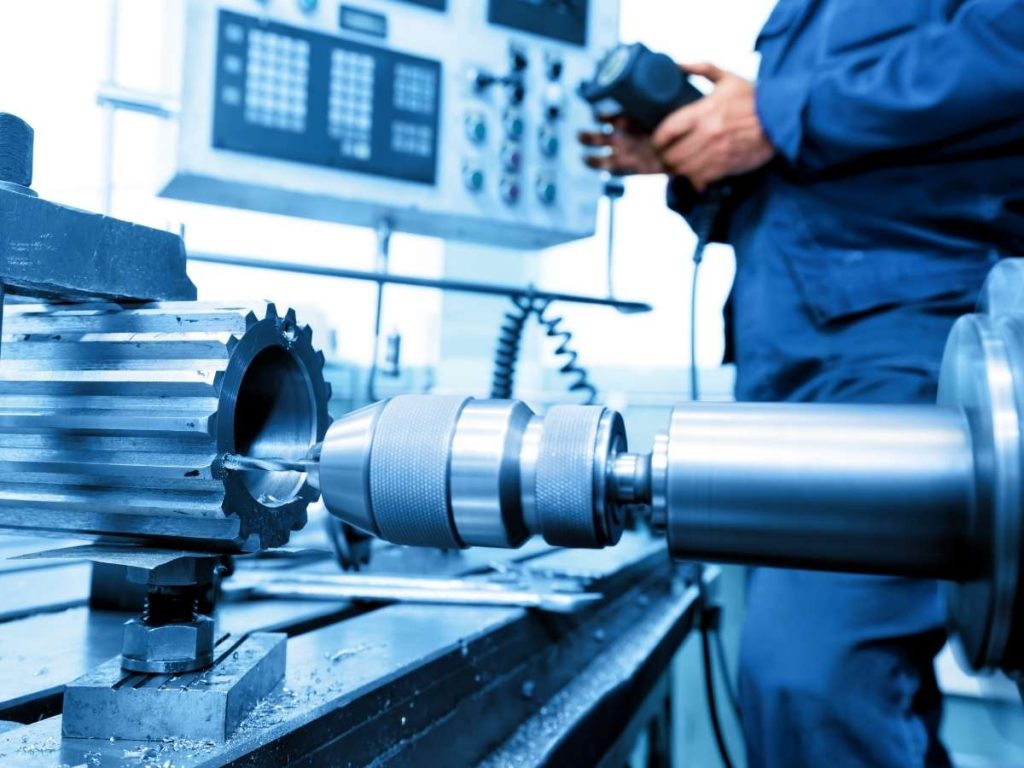
5. Setting Up and Operating a CNC Control System
Setting up a CNC control system can feel overwhelming, especially if you’re new to it. But once you break it down, it’s just a series of steps. Each step is important, and skipping one can lead to errors.
Whether you’re setting up a new CNC machine or troubleshooting an existing one, knowing how the control system works will save you time and frustration. Let’s start with the basics.
Before you can start cutting, you need to set up the control system. Here’s how:
Step 1: Install and configure the CNC control software.
- Most CNC systems use software like Mach3, LinuxCNC, or UCCNC.
- Follow the installation instructions and configure settings based on your machine’s specifications.
Step 2: Connect the controller to motors, sensors, and spindle.
- The controller sends signals to the stepper or servo motors, controlling movement.
- Sensors help with precision by detecting position and movement errors.
- Make sure all connections are secure to avoid malfunctions.
Step 3: Calibrate the axes for accuracy.
- Calibration ensures the machine moves the correct distance when given a command.
- Use a dial indicator or precision measuring tool to verify accuracy.
- Adjust motor steps and backlash settings if needed.
Step 4: Load the G-code file and test on scrap material.
- Before cutting the actual material, run a test on scrap wood, plastic, or foam.
- Watch the machine closely to catch any errors before running a full job.
6. Common CNC Control Problems and How to Fix Them
Even after setting up your CNC control system correctly, things can still go wrong. Machines can stop responding, cuts can come out inaccurate, and movements may not follow the intended path.
When that happens, it can be frustrating. But most CNC problems have simple solutions. The key is knowing where to look first. Let’s go over some common issues and how to fix them.
Machine Not Responding
If your CNC machine doesn’t move or start when you load a program, something is preventing it from receiving commands.
Possible causes and solutions:
- Check power connections: Make sure the machine is plugged in and switched on. Look for any loose cables or blown fuses.
- Inspect the emergency stop button: Many CNC machines have an emergency stop button. If it’s pressed, the machine won’t move. Reset it and try again.
- Verify software settings: Open your CNC software and check if the machine is properly connected. If the software isn’t detecting the machine, restart both the software and the CNC controller.
- Look for driver or communication issues: If using a software-based control system like Mach3 or LinuxCNC, check that the correct drivers are installed. Try switching USB or parallel ports if needed.
Incorrect Movements
If your CNC machine isn’t following the intended path or moves in the wrong direction, the problem is likely with the G-code or calibration.
How to fix it:
- Check the G-code file: A single mistake in the code can throw off an entire job. Look for incorrect toolpaths, missing commands, or formatting errors.
- Recalibrate the motors: If your machine moves too far or not far enough, the motor steps per unit setting may need adjustment.
- Verify tool size and offsets: Make sure the tool size matches the one set in the control system. Incorrect tool offsets can cause misalignment.
- Inspect the stepper or servo motors: If motors are skipping steps, check for loose belts, worn-out couplings, or incorrect acceleration settings.
Inconsistent Cutting Results
If your cuts aren’t coming out clean or accurate, multiple factors could be at play.
Common causes and fixes:
- Dull or damaged cutting tools: If the tool is worn out, it won’t cut smoothly. Replace it and check if the issue improves.
- Incorrect cutting speed and feed rate: Cutting too fast can cause rough edges, while cutting too slow can lead to burning or excessive wear. Adjust speed settings based on material type.
- Weak material hold-down: If the material shifts during cutting, the final piece won’t be accurate. Secure it using clamps, vacuum tables, or double-sided tape.
- Machine rigidity issues: If the machine vibrates during operation, it can affect accuracy. Tighten loose screws, check for frame stability, and reduce aggressive cutting forces.
CNC troubleshooting is part of the process. No machine runs perfectly all the time, but knowing how to identify and fix common issues will keep your work consistent and precise.
The next time your CNC machine isn’t working right, don’t panic.
Start with the basics, check each possible cause, and make adjustments one step at a time. Most issues can be solved with patience and small tweaks.
7. Maintenance Tips for Longevity
what exactly should you do to keep your CNC control system in good shape? Here are three key maintenance steps that can extend the life of your machine.
Keep Software Updated
Just like any computer, your CNC control system relies on software to function properly. Over time, outdated software can cause:
- Bugs that lead to unexpected errors or crashes.
- Security vulnerabilities that can expose your system to threats.
- Compatibility issues with newer machines or features.
To avoid these problems, check for software updates regularly. Manufacturers often release patches that fix bugs and improve performance. If your control system is connected to a network, be sure to update security settings to prevent unauthorized access.
Inspect Wiring and Connectors
Loose or damaged wires can lead to intermittent errors, motor failures, or even complete system shutdowns. It’s easy to overlook wiring, but electrical issues can cause some of the most frustrating CNC problems.
Here’s what to check:
- Look for frayed or exposed wires that could cause shorts.
- Make sure all connectors are firmly in place.
- Check for signs of overheating, like melted insulation or a burnt smell.
If you notice a loose connection, tighten it before it turns into a bigger issue. Taking a few minutes to inspect the wiring can save you hours of troubleshooting later.
Clean the Control Panel and Sensors
Dust and debris might seem harmless, but they can cause buttons to stick, sensors to malfunction, and fans to clog up. If dust builds up inside the control panel, it can even cause overheating.
To keep things running smoothly:
- Wipe down the control panel with a dry or slightly damp cloth.
- Use compressed air to clear dust from inside the machine.
- Check sensors for dirt buildup that might interfere with accuracy.
A little cleaning goes a long way. Keeping the control system free of dust helps prevent electrical failures and keeps sensors working as they should.
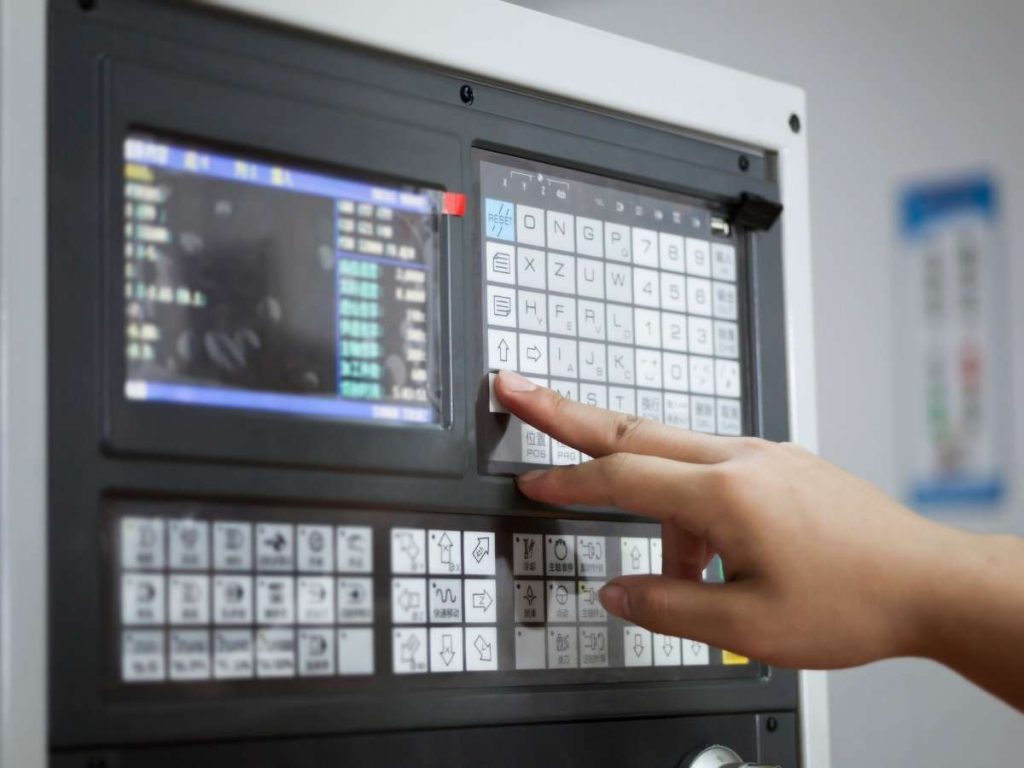
8. When to Upgrade Your CNC Controller
CNC machines are built to last, but control systems don’t stay current forever. As technology improves, newer controllers offer better features, faster speeds, and more compatibility. But how do you know when it’s time to upgrade?
Upgrading a CNC controller isn’t something you do just for the sake of it. It’s an investment, and it should solve a real problem. If your machine is running fine and delivering the precision you need, you might not need a new controller. But if you’re constantly dealing with slow processing, outdated features, or software issues, an upgrade could be the right move.
If you’re experiencing any of the issues below, it may be time for an upgrade:
- Your current control system is outdated and lacks features.
- Older controllers often miss out on modern capabilities like real-time monitoring, cloud integration, or user-friendly touchscreen interfaces.
- If your machine still uses floppy disks or has slow processing speeds, it might be limiting your productivity.
- Newer systems often come with improved safety features, better motion control, and more intuitive programming.
- You need higher precision or faster processing speeds.
- Some older CNC controllers struggle with high-speed machining or tight tolerances.
- If your machine isn’t holding the accuracy you need, the issue may not be the hardware, it could be the controller’s processing power.
- Faster controllers reduce downtime, speed up toolpath calculations, and improve the smoothness of complex cuts.
- Your machine is incompatible with new software.
- Newer CAD/CAM software may not work with older CNC control systems.
- If you’re constantly running into software limitations or struggling to transfer files, your controller might be the weak link.
- Upgrading to a modern system can improve workflow, automation, and integration with design programs.
A CNC controller upgrade can breathe new life into an old machine. It can improve precision, reduce errors, and make your work more efficient. If your current system is holding you back, it might be time to make a change.
The best way to decide?
Compare your current controller’s performance with what’s available today. If a newer system solves your biggest frustrations, an upgrade could be well worth it.
Conclusion
CNC machines don’t think. The control system does. And now, you know exactly how it works.
We covered everything, types of CNC control, setup, troubleshooting, and when to upgrade.
But understanding isn’t enough. The best way to learn is to start. Troubleshoot your machine. Try a test cut. Explore new software.
What’s stopping you from getting the best performance out of your CNC machine?
Let’s solve it together. Contact us today!
Explore More Helpful Resources
We’ve got more for you! These articles provide more tips and guidance to keep you on track:
Still haven’t found what you’re looking for? Don’t hesitate to contact us. We’re available around the clock to assist you.


